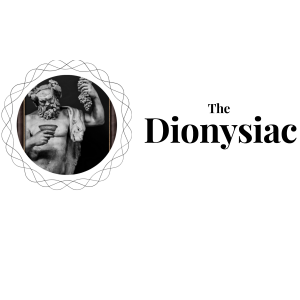“The Dionysiac is an attempt to describe the effect and power of Art catering to the Dionysian spirit. It is written in the spirit of intoxication, like the divine and sublime image of the Satyr, proclaiming the power of the art through the metaphor of linguistics.”
The world is in a state of individuation. In-vogue terms – the good life, self-consciousness, serenity – have arrived at us. Art has attained a seat as the symbol of fine taste and stature. Dreams are observed as illusions yet utilized in the process of creation and appear as the elixir to battle the crippling realities of our time. Consuming and creating art are counted as antidotes to existing, and a restrained reverie as the attitudinal ingredient to living. A man of culture, reigns in all of this, his nature and spirit, garnering accolades for himself by himself.
In the Birth of Tragedy, Friedrich Nietzsche describes this as the “naïve artist” or a veil or Maya and calls upon the spirit of the ancient Greek God, Dionysus.

The Dionysian reality, as Nietzsche describes is one of primordial unity. It is the knowledge and suffering of the truth beyond the dreams. The Dionysian man has looked right into the terrible destructiveness of the world and the cruelty of nature, understanding the horror or absurdity of existence. Art as the sublime taming of brutality or as the comic discharge of the nausea of absurdity arrives as the saving sorceress to heal for the Dionysian man.
APOLLO – DREAM
Beautiful appearance of the world of dreams
Shimmering sense of their illusory quality
The innermost selves enjoys the experience of dreams and deems it necessary
DIONYSUS – intoxication
The subjective fades into complete forgetfulness of self.
Under the magic, the bond between man and man locks itself. Nature reconciliates and rejoices at this unity with her prodigal son, man.
The Dionysiac is an attempt to describe the effect and power of Art catering to the Dionysian spirit. It is written in the spirit of intoxication, like the divine and sublime image of the Satyr, proclaiming the power of the art through the metaphor of linguistics. It is a jubilant space devoted to truth and nature, written through the effects as they appear to a fellow Dionysian.
For the skeptics, the Dionysiac is a stream of consciousness operating at the seams of society and culture, straddling feelings and sensations conjured from the bowels of philosophy, literature, music, cinema et al.
In no way, does it pretend to craft original ideas or tight academic insights. The idea is for fellow Dionysians to contemplate themselves within the vicarious world of metaphors as concepts, and to recognize the host of spirits that are at one with them.
